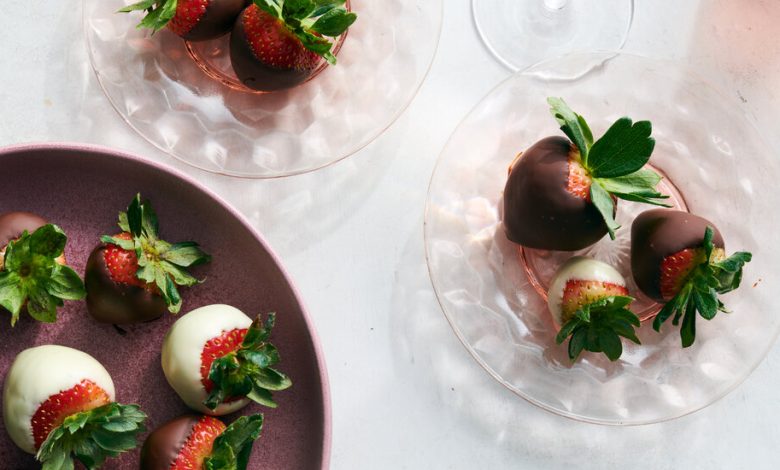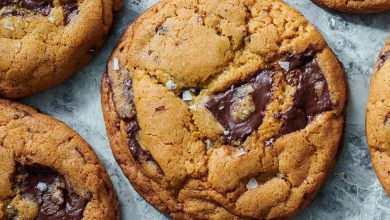The Secret to Perfect Chocolate-Covered Strawberries

Remember the last time you bit into a chocolate-covered strawberry? If the shell snapped audibly, pooling on your tongue as it melted, then chances are that chocolate was tempered. Tempering, essentially melting and cooling chocolate, is why that thin shell of chocolate yielding to a juicy berry cracks with such a crisp, satisfying sharpness.
Recipe: Chocolate-Covered Strawberries
No one needs to learn how to temper chocolate to enjoy it, but knowing this basic skill of a professional chocolatier — and the science behind it — can broaden your understanding of why the chocolate you eat every day looks and feels and tastes the way it does. It also opens up a world of homemade confections. Think chocolate-covered strawberries and whatever else your heart (or sweetheart) desires: bananas, marshmallows, candied oranges.
“The number one mystique that has to do with chocolate is tempering,” Alice Medrich writes in her award-winning cookbook, “Cocolat: Extraordinary Chocolate Desserts.” So let’s demystify it: Chocolate is made with sugar, cocoa solids, cocoa butter and, sometimes, flavorings like vanilla and emulsifiers like lecithin. Cocoa butter, the natural fat extracted from cocoa beans, is what makes chocolate liquid when hot and solid when cold. To temper chocolate, then, is to melt and cool it (and sometimes warm it again) to the right temperatures to get a snappy, shiny shell that sets and doesn’t melt at room temperature.
Crystallization is the keyword here. When chocolate is first melted, the cocoa butter’s fat crystals melt completely. To start reforming those crystals, stir the melted chocolate to cool it; finely chopped chocolate (called seed chocolate) can be added to jump-start this cooling process. If the chocolate becomes too thick for dipping, reheat it gently. All of this allows the cocoa butter to solidify again at room temperature with even and stable fat crystal formation.
And if it doesn’t set? Feel free to just refrigerate it.
Paul Lorusso has been tempering chocolate since he was a teenager. (His family has been in the confectionary business for generations.) In the 1960s, his mother, Lorraine Lorusso, was working at Stop & Shop, a gourmet food store in the suburbs of Chicago. Mr. Lorusso said that it was there that she thought to take the giant strawberries from the fruit department next to her candy stand, then dip them in chocolate for Mother’s Day. “In 25 hours,” she said in a biography of her life, “with an investment of only $700, I had a return of over $3,800.”
We are having trouble retrieving the article content.
Please enable JavaScript in your browser settings.
Thank you for your patience while we verify access. If you are in Reader mode please exit and log into your Times account, or subscribe for all of The Times.
Thank you for your patience while we verify access.
Already a subscriber? Log in.
Want all of The Times? Subscribe.




